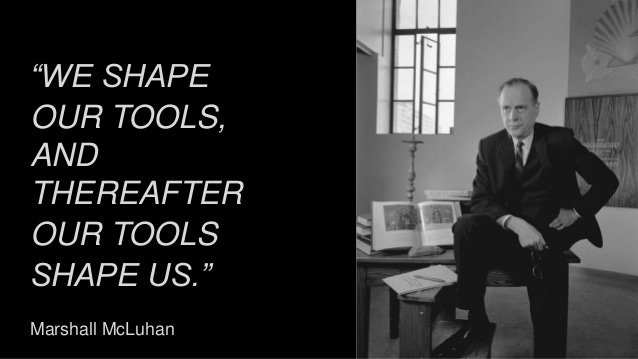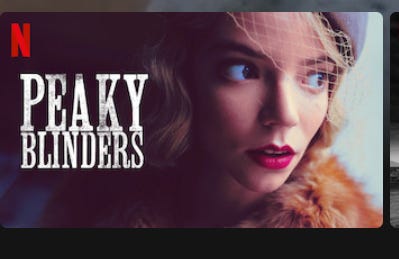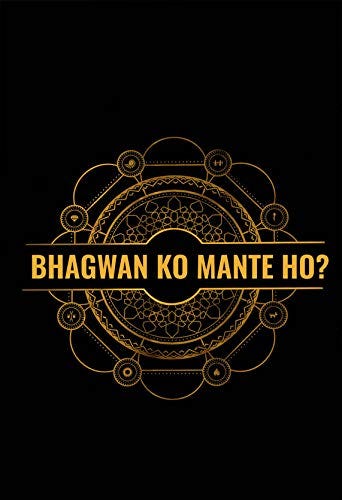The Netflix Universe Part - II (3/100)
Product, Algorithm, India plans and the future
Hi there,
Thanks to everyone who subscribed last week. In the previous edition, we wrote about the Netflix story from inception, how’s it impacting society and culture, and what’s it like to work at Netflix. If you haven’t already read it here
We take things up a notch this week, try and understand what Netflix is all about - the business, the tech prowess, and all the jazz.
In this week’s edition, we’ll cover:
The Netflix Product
Recommendation Algorithm
Netflix India Plans
Future of Netflix
You are blown away by Nawazudin Siddiqui's intense character. You're so involved with Rachel, Monica, and Phoebe that you forget your own friends. You're tickled by Hasan Minhaj and get sleepless nights by the futuristic stories in Black Mirror. Years pass by as our binge-watching turns us into couch potatoes.
How does Netflix get us hooked on to our screens? What happens in the future?
Read on, we have a lot to unpack today.
1.The Netflix Product
Like all great tech companies, Netflix’s brilliant product is at the heart of everything it does.

Marshall McLuhan is the man who predicted the Internet 30 years before it happened. More on him and his worldview in the coming months.
Reed Hastings identified “hours per subscriber per month” as Netflix’s north star metric, in simpler terms 8600 Netflix employees across the world are working hard to make sure you spend more hours on Netflix.
How exactly do they do it?
Matthew Ball shares amazing details about the product, the company, strategy, product, competition, and a lot more. I can’t recommend reading his 8 part series enough.
🗜 Video Compression Algorithm
Helps users get better-looking streams and save 20% of their data
Multiple versions of video files are created for different internet speeds
Netflix initially had a legacy video algorithm - all movies worked on the same style vs now an animated movie can be watched in full HD with a lot of data savings while a movie like Avengers which has a lot of visual detail will need a higher bandwidth
🌏 Distribution
Netflix’s apps are available on more devices worldwide than any other OTT provider, even devices such as the PlayStations, Nintendo, treadmills beyond all the usual devices. Companies should go where their target users are - well, Netflix is everywhere!
🧪 A/B Testing
Curators choose static video frames for thumbnails and for showing promos. Everything is done through A/B testing to drive more traffic. These images are different for different audiences.
 Gotta love the Netflix thumbnail algorithm. Turns out putting the star of Queen's Gambit on the cover of Peaky Binders (she is in 6 of 30 episodes and is a minor character) drives clicks!
Gotta love the Netflix thumbnail algorithm. Turns out putting the star of Queen's Gambit on the cover of Peaky Binders (she is in 6 of 30 episodes and is a minor character) drives clicks!
Netflix has built a tool called AVA to identify the best frames for a title to draw the most viewers. “A single season of an average TV show (about 10 episodes) contains nearly 9 million total frames.”
🧠 Engagement functions (Product features)
autoplay trailers (algorithmically generated for licensed titles)
auto-resume when selecting a previously started title
auto-play next episode
like 👍 and dislike 👎 buttons
credits skipping
vertical video trailers
the genre of the movie/tv series
top 10 movies/tv-shows (geographically)
Play anything right at the profile level (great use case to avoid spending time on the discovery of content)
add to my list
parental control
lock your profile with a pin
👨👩👧👧 Personalization
Netflix was the first OTT video service to rollout user accounts and recommendations that tap into 80,000 tagged genre sub-categories. Every single user account has personalized content.
🎨 Interactive/dynamic storytelling technology
This feature has been in the works since 2017. Users control the storyline for the movie/tv show they’re watching. I imagine something like this BCG case study simulation, you choose the next steps and create your own happy ending if that’s your cup of tea.
📹 Netflix has an app called MOVE for film crews
Designed to simplify some key parts of the production process, including the management of a crew, the scheduling of a shoot, and the budgeting to pay for it all. With MOVE, they want to simplify lives for film crews as well but also give Netflix a lot of data points around production. 😅
2. The Netflix Recommendation Algorithm
To understand the nuances of the algorithm and why you watch what you watch, we first need to understand the different types of “Originals” on Netflix.
This is important because more than 80% of Netflix shows - customers watched in the last two years have been as a direct result of Netflix’s recommendation engine. Not someone searching for a specific piece of content. Remember the quote from the man who envisioned the Internet 30 years before it came into existence?
Netflix Originals
Developed Originals - these shows are developed, produced, and released by Netflix itself. Netflix covers the cost of production and has full control over budgets, renewals, IP rights, and creative decisions. eg. Stranger Things
Acquired Originals - these shows are developed by third-party studios. Netflix has semi-control. They mostly outbid competitors, this requires Netflix to pay a premium of anywhere from ~10-50 percent above production cost. eg. The Crown & Narcos
Co-Licensed Originals - shows where Netflix has to partner with other networks and pay some or full budget for the shows. Netflix may lack control in major decisions depending on the $$ % they've invested. eg. The End of the Fucking World and Frontier
Licensed Originals - shows developed by other networks. Netflix has virtually no control over decision making. More expensive than co-licensed originals but less risky because they can watch the content before investing. eg. Designated Survivor in the UK and Better Call Saul everywhere but the US, Canada, Australia, and New Zealand.
Licensed Series - these can't be branded as Netflix Originals because they are produced and developed by another network. eg. The Office and Friends in the US
Many originals change categories – Black Mirror and Designated Survivor began as “Licensed Originals” for Netflix, but have since become “Developed Originals.”
The categorization is extremely important to understand things from a business lens. It's part of the Netflix branding exercise. The perception that Netflix itself develops high-quality content. Redefining the phrase “Original Series” may literally be worth billions to Netflix.
Netflix is competing on producing B+ content with A+ consistency while other streaming platforms especially HBO need to produce A+ content about 12 times a year. Netflix competes on quantity whereas all the other platforms target a niche set of customers and try to serve them really well. Due to Netflix's global presence - most of its competitors work as its suppliers as they license their content to Netflix in markets where they don't have a presence.
Finally, The Netflix Algorithm
Netflix spends a lot of money to create its own content. Just to give yourself a reality check, go to your Netflix profile, next to the bell 🔔 icon, and click viewing activity under your/friend’s profile name. There's a high probability a large majority of the TV shows and movies that you've watched are Netflix Originals. As explained earlier, Netflix spends money acquiring content and most of what it pushes in front of users is the content where it'll have to spend the least money.
Why does this happen?
Analysis-paralysis. Consider the time you were bored, how much time did you spend selecting a movie or a TV show? Discovering good content to watch is hard. So the solution to this is a recommendation algorithm. The more content you watch, the better the algorithm gets.
The algorithm curates titles that you’re most likely to watch at the top of the page so you spend time watching content rather than spending time deciding what to watch.
It understands the type of genres you watch. It further digs into its large database of users and their watching habits, making it effective for a large number of users.
Some of the data points that the Netflix team captures while you're watching movies and TV shows on the platform:
When you pause, rewind, or fast forward
What day you watch content (Netflix has found people watch TV shows during the week and movies during the weekend)
The date you watch
What time you watch content
Where you watch (zip code)
What device you use to watch (Do you like to use your tablet for TV shows and your TV for movies?
Do people access the Just for Kids feature more on their iPads, etc.?)
When you pause and leave content (and if you ever come back)
Whether you like a title 👍 or dislike 👎
Searches
Browsing and scrolling behavior
Source: How Netflix uses Analytics
3. Netflix India plans
Reed Hastings expects in the years to come that Netflix will have upwards of 100 million subscribers thanks to improved Internet penetration and Jio. Currently, this number stands around ~ 5-6 million.
Netflix’s data repository along with its ability to attract the best talent in the business helps them identify the latest trends on Youtube, Facebook, and other social media channels. Combine all that with the current viewing habits of subscribers and experimentation - Netflix has a fairly good idea of what’s going to work in different regions around the world.

More than two-thirds of the viewership for Sacred Games in 2018 came from outside India.
India is the only country in the world where Netflix users watch more content on their phones rather than laptops or TVs. This is down to two major factors:
Rs. 199 plan - this was a masterstroke by Netflix
Sacred Games - Netflix after announcing SG, attracted lakhs of subscribers overnight
Not only did Sacred Games’ popularity help gain subscribers in India, but it also served as quality content for audiences across the borders. I expect Netflix to double down on this trend in the coming years to help the company march towards 100 million subscribers in India.
Little Things was one of the most popular Indian web series of all time on YouTube. Netflix was able to get new subscribers and was able to tap into the young adult genre. The partnership has helped us take the show to 190 countries and give it greater scale and depth.
- Pandita and Suresh of Dice Media
In India, the company’s spend is nearing Rs 1,000 crore ($141 million) annually on local content production, according to estimates from at least two industry executives. So far, the film budgets have been around Rs 30-35 crore ($4.2-4.9 million) per project, while series have ranged anywhere from Rs 2 crore ($282,000) an episode in case of a show like Little Things to Rs 10-15 crore ($1.4-2 million) an episode for big-budget shows like Sacred Games and Bard of Blood.
Source: The Morning Context, 2019
Depending on your plans for the coming years, people based out in India, brace yourselves for more local content. More content in regional Indian languages:
Tamil
Punjabi
Telugu
Malayalam
Marathi
Bengali
Outside of the US market, Netflix clearly sees India as a valuable market.
![r/dataisbeautiful - [OC] TOP 10 countries with the most productions on Netflix r/dataisbeautiful - [OC] TOP 10 countries with the most productions on Netflix](https://substackcdn.com/image/fetch/$s_!ePh_!,w_1456,c_limit,f_auto,q_auto:good,fl_progressive:steep/https%3A%2F%2Fbucketeer-e05bbc84-baa3-437e-9518-adb32be77984.s3.amazonaws.com%2Fpublic%2Fimages%2F86f0e537-a6ff-4d8f-97e5-54ba198759bd_960x508.png)
4. Future of Netflix
Content, Content, Content. And more content.
Expect a lot more foreign content from Korea, Spain, France, and all around the world dubbed in different languages. Content from one corner of the world is finding popularity in another corner of the world. This trend will continue to rise in the coming years.
Fitness and sports - Netflix wants to have everything to do with our leisure time. Fans across the world watch and play sports. There’s definitely a play here for a streaming service although the TV networks that currently stream various sports won’t let things go without a fight. I don’t understand the logistics but there’s definitely a need for a Netflix-like product for streaming matches. DAZN is one such product just for streaming boxing matches. I’d expect Netflix to get in on this sooner rather than later.
Cloud gaming - Netflix has the state of the art at-scale video delivery and compression technology in the world. There are days when 20% of global downstream bandwidth belongs to Netflix. The video gaming industry is looking to cloud gaming as an opportunity to attract those who don’t consider themselves gamers (and are unlikely to buy a Playstation, Xbox, and gaming subscriptions). When the technology is ready, Netflix is the perfect solution for cloud gaming companies.
Social Network with the highest engagement - Netflix has 250-400MM subscriptions (with an average of three user profiles per subscription), each spending at least three hours a day on the service (and thus accessing it multiple times per day), the company will have built a paid consumer platform with greater engagement than Facebook. This reach (defined by users x frequency) is powerful, and when added to the “all leisure time” ethos and virtuous cycles, it’s hard to imagine the company will stick with the current platform and not allow social interaction on the platform itself.
What do you reckon will be the future of Netflix? Where do you see it going in the coming years? Let me know by replying to this mail or reach out to me on Twitter.
This wraps up Part 2 of Mellow Wisdom’s Netflix series. I hope you enjoyed reading it as much as I enjoyed writing it.
Thanks for reading and see you next week as we switch gears!!
- Vaibhav
If you’re reading this newsletter for the first time, you can read previous issues and subscribe below.
I am Vaibhav K Achantani. I lead Content & Growth at an Edtech called Tekie. You can connect with me on Twitter or Linkedin or just reply to this mail.
Weekly Content
🤓 Read - this outstanding 8 part series on Netflix by Matthew Hall. Not many people understand the streaming business better than him.
🎧 Listen - to this brilliant 7 part podcast Land of the Giants by Vox Media




Hey Vaibhav, I must say amazing insights into Netflix product and usage behaviours. As a PM I was looking for a story and behavioural insights, I got both. It was very well written. Thanks for the effort.